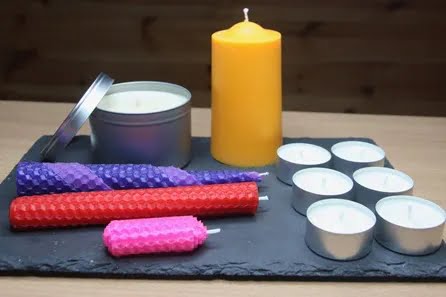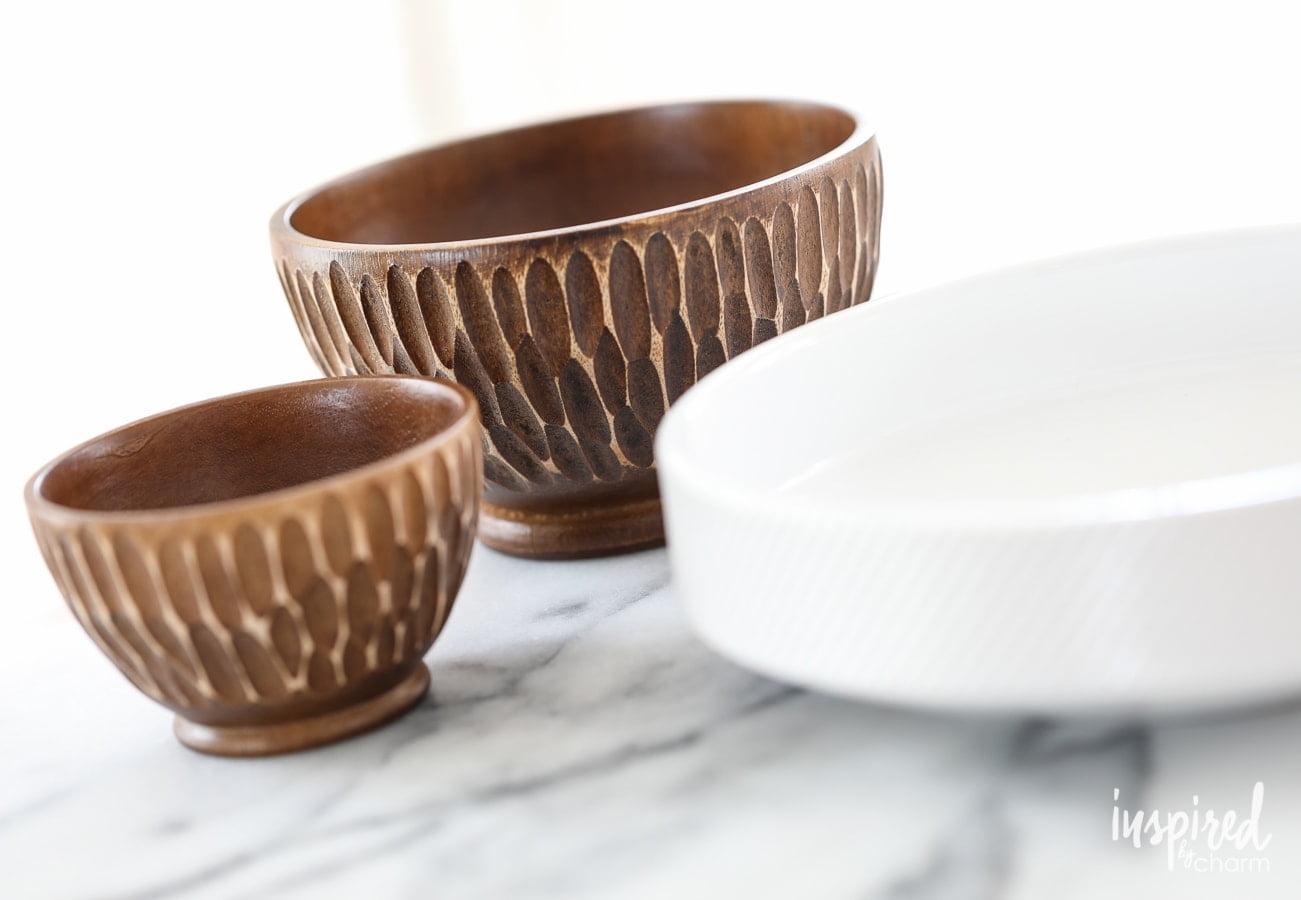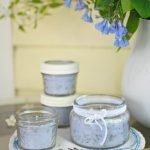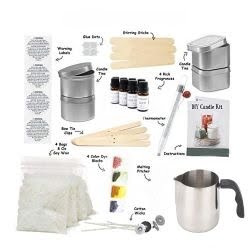Looking for the best wax for making candle sticks? Choosing the right wax is crucial for creating high-quality candles that burn evenly and emit a pleasing aroma. In this article, we will explore the different types of wax commonly used in candle making and discuss their respective pros and cons. Whether you’re a beginner or an experienced candle maker, understanding the importance of selecting the best wax is essential to achieving optimal results.
When it comes to crafting candle sticks, choosing the right type of wax is key to creating beautiful and long-lasting candles. The type of wax you use can affect factors such as burn time, scent throw, and overall performance.
With various options available in the market, from soy wax to paraffin wax to beeswax and palm wax, it’s important to evaluate each type carefully before making a decision. By understanding the characteristics of different waxes, you can make an informed choice that suits your specific candle making needs.
In this comprehensive guide, we will delve into the details of each type of wax used in candle making, including their individual benefits and limitations. Whether you prioritize sustainability, scent retention, or texture, there is a perfect wax out there for your candle stick crafting projects. So let’s dive in and explore the wide range of options available for creating exceptional candle sticks.
Types of Wax
When it comes to making candle sticks, selecting the right type of wax is essential for creating the perfect candle. There are several options available, each with its own unique properties and characteristics that can impact the final product. Understanding the different types of wax and their benefits and drawbacks can help you make an informed decision when choosing the best wax for your candle making.
Here are some common types of wax used in candle making:
- Paraffin Wax: One of the most popular choices for making candle sticks, paraffin wax is known for its affordability and ability to hold color and fragrance well. However, it does produce soot when burned, and some people may have concerns about its petroleum-derived nature.
- Soy Wax: Made from soybean oil, this natural and renewable wax is becoming increasingly popular in candle making. Soy wax burns cleaner than paraffin wax and has a longer burn time, but it may not hold fragrance as well as other waxes.
- Beeswax: Known for its natural golden color and sweet honey scent, beeswax is a favorite among many candle makers. It burns cleanly and has a natural honey scent, but it can be more expensive than other waxes.
- Palm Wax: Derived from palm oil, palm wax produces beautiful crystalline patterns when cooled. It has good scent throw and provides an excellent option for creating unique and decorative candles.
- Blended Waxes: Some candle makers opt to use a combination of different waxes to achieve specific properties such as improved scent throw or better burning characteristics.
Each type of wax has its own advantages and disadvantages, so carefully evaluating the options based on your specific needs can help you choose the best wax for making your candle sticks. Whether you prioritize clean burning, strong fragrance throw, or aesthetic appeal, there is a perfect type of wax out there for your candle making needs.
Soy Wax
When it comes to making candle sticks, choosing the right wax is crucial for achieving the best results. One popular option in the world of candle making is soy wax. Derived from soybean oil, soy wax has gained popularity due to its natural and renewable source. One of the key advantages of using soy wax for candle sticks is its clean-burning properties, which means less soot and a longer-lasting candle.
In addition to its clean-burning qualities, soy wax is also known for its excellent scent throw. This means that it has the ability to effectively distribute fragrance throughout a room when the candle is lit. For those who are environmentally conscious, soy wax is a great choice as it is biodegradable and comes from a renewable resource. However, it’s important to note that soy wax can be more expensive than other options such as paraffin wax.
Despite its many benefits, there are some drawbacks to consider when using soy wax for candle making. One concern is its soft nature, which can make it more susceptible to dents and scratches. Additionally, soy wax may not always hold color or fragrance as well as other waxes. However, with the right techniques and additives, these issues can be mitigated to create beautiful and high-quality candle sticks.
| Advantages | Disadvantages |
|---|---|
| Clean-burning | Soft nature |
| Excellent scent throw | Potential difficulty holding color or fragrance |
| Renewable source | Potentially higher cost |
Paraffin Wax
Benefits of Paraffin Wax
Paraffin wax is one of the most popular choices for candle making due to its affordability and accessibility. It is known for producing a clean and consistent burn, allowing for a longer-lasting candle. Additionally, paraffin wax has a high fragrance load capacity, meaning it can hold a large amount of scent, resulting in strong-smelling candles. Its ability to easily release from molds also makes it a favorite among candle makers.
Drawbacks of Paraffin Wax
Despite its popularity, paraffin wax does have some drawbacks that need to be considered. One major concern with paraffin wax is its association with petroleum, which may deter environmentally-conscious consumers. Another drawback is that paraffin wax can produce soot when burned, which may lead to indoor air pollution. Additionally, some individuals may have sensitivities to the chemicals used in paraffin wax, causing allergic reactions or respiratory issues.
Tips for Using Paraffin Wax
When using paraffin wax for making candle sticks, it’s important to pay attention to the melting point and pour temperature to achieve optimal results. It is recommended to use a thermometer when melting paraffin wax and follow the manufacturer’s guidelines for safe handling. Additionally, adding stearic acid or vybar can help improve the burning characteristics of paraffin wax candles.
As you consider using paraffin wax for your candle stick crafting, it’s important to weigh both the benefits and drawbacks before making your decision. Taking into account these aspects will help you make an informed choice when selecting the best wax for making candle sticks.
Beeswax
Pros of Beeswax for Candle Making
One of the main reasons why beeswax is a popular choice for crafting candle sticks is its all-natural composition. Beeswax is free from synthetic additives and chemicals, making it a safe and eco-friendly option for those who prioritize sustainability and natural ingredients. Additionally, beeswax candles have a natural sweet scent and are known to burn brighter and longer than other types of candles.
Cons of Beeswax for Candle Making
While beeswax offers many benefits, there are also some drawbacks to consider. One of the main considerations when using beeswax for candle making is its higher cost compared to other types of wax. Additionally, pure beeswax can be more difficult to work with due to its high melting point, which may require special equipment and techniques to achieve the desired results.
Why Beeswax Stands Out
Despite the higher cost and potential challenges in working with beeswax, many crafters continue to choose this type of wax for their candle stick projects due to its unique qualities. Beeswax produces candles with a warm glow and clean burning properties, making it an excellent choice for those seeking high-quality, all-natural candles for their home or gifts.
When shopping for the best wax for making candle sticks, many enthusiasts find that beeswax stands out as a top option that delivers both beauty and performance.
Palm Wax
Palm wax is becoming an increasingly popular choice among candle makers due to its unique qualities. It is derived from palm oil, which is a renewable and natural resource, making it an environmentally friendly option. This wax is known for its beautiful crystalline and feather-like patterns when solidified, giving candles a unique and attractive appearance.
One of the standout features of palm wax is its ability to hold scents well, making it an excellent choice for scented candles. The natural aesthetic appeal of palm wax candles, combined with their strong scent throw, makes them a great option for both personal use and as gifts. Additionally, palm wax has a higher melting point compared to other waxes, which means that candles made from palm wax are more resistant to heat and have a longer burn time.
When considering the best wax for making candle sticks, it’s important to take into account the specific qualities that each type of wax offers. Palm wax stands out as a unique option due to its eco-friendly nature, aesthetic appeal, and superior scent throw. These factors make it a top choice for many candle makers looking to create high-quality candle sticks that not only look beautiful but also provide an exceptional olfactory experience for users.
| Advantages of Palm Wax | Disadvantages of Palm Wax |
|---|---|
| Natural and renewable resource | Can be more expensive than other waxes |
| Strong scent throw | Requires high fragrance loads for optimal scent throw |
| Unique crystalline patterns when solidified | Harder to find in stores compared to other waxes |
Blended Waxes
When it comes to crafting candle sticks, blended waxes offer excellent scent throw, meaning they are able to effectively diffuse fragrance into the surrounding space when the candle is lit. This makes them an excellent choice for creating scented candles that can fill a room with delightful aromas. Additionally, blended waxes often have a smooth and creamy appearance that is aesthetically pleasing, making them an attractive option for candle making.
Another advantage of using blended waxes for candle stick crafting is their versatility. By combining different types of wax, candle makers can create a wax blend that meets their specific needs and preferences.
Whether it’s achieving a certain level of hardness, improving burn stability, or enhancing fragrance retention, blended waxes allow for greater control over the final product. This flexibility makes them an excellent choice for both experienced and novice candle makers who want to tailor their candles to meet customer demands or personal preferences.
In summary, blended waxes offer numerous advantages for crafting high-quality candle sticks. Their ability to be customized according to specific requirements makes them a versatile option for candle makers looking to create unique and appealing products. With their excellent scent throw and aesthetic appeal, blended waxes are certainly worth considering when searching for the best wax for making candle sticks.
Choosing the Best Wax for Your Candle Sticks
When it comes to choosing the best wax for making candle sticks, there are several factors that need to be considered. Each type of wax has its own unique qualities and characteristics that make it suitable for certain types of candles. Here are some key factors to consider when making your decision:
1. Scent: If you want to add fragrance to your candle sticks, you’ll want to choose a wax that is able to hold and throw scent well. Some waxes, like soy wax, are known for their excellent scent throw, while others may not hold fragrance as effectively.
2. Burn Time: Consider how long you want your candle sticks to burn. Some waxes have a longer burn time than others, so if you’re looking for candles that will last a long time, you’ll want to choose a wax with a longer burn time.
3. Eco-Friendliness: If environmental impact is important to you, look for waxes that are sustainable and environmentally friendly. Soy wax and beeswax are both popular choices for eco-conscious candle makers.
4. Color: Certain types of waxes have natural colors that can affect the final appearance of your candle sticks. Beeswax has a warm, natural hue while paraffin wax can be bleached and dyed easily if you want more colorful candles.
5. Cost: Finally, consider your budget when choosing the best wax for making candle sticks. Some waxes may be more expensive than others, so be sure to factor in the cost per pound when making your decision.
By taking these factors into consideration, you can choose the best wax for making candle sticks that aligns with your preferences and needs as a candle maker. Whether you prioritize scent, burn time, eco-friendliness, color or cost – there’s a perfect wax out there waiting for you.
Conclusion
In conclusion, choosing the best wax for making candle sticks requires careful consideration of various factors. Whether you opt for soy wax, paraffin wax, beeswax, palm wax, or blended waxes, each option comes with its own set of pros and cons. It’s important to think about factors such as burn time, scent throw, color possibilities, and environmental impact when deciding on the right wax for your candle making endeavors.
When it comes to finding the best wax for making candle sticks, there is no one-size-fits-all solution. Instead, it’s about weighing the advantages and drawbacks of each type of wax and considering your specific needs and preferences.
For example, if you prioritize an eco-friendly option with a long burn time, soy wax might be the best choice for you. On the other hand, if you’re focused on achieving a traditional look and feel with excellent fragrance retention, then paraffin wax could be the ideal option for your candle sticks.
Ultimately, the best wax for making candle sticks will depend on a combination of personal preference and practical considerations. By carefully evaluating the different types of wax available and considering how they align with your needs as a candle maker or crafter, you can make an informed decision that leads to beautiful and high-quality candle sticks that meet your expectations.
Remember that experimenting with different waxes may also be beneficial in discovering which one works best for your specific creative projects.
Frequently Asked Questions
What Is the Best Wax for Stick Candles?
The best wax for stick candles is generally paraffin wax, as it is affordable, easy to work with, and produces a bright flame. It also holds colors and scents well.
Which Wax Is Best for Making Candles?
When it comes to making candles, soy wax is widely considered the best option. It is natural, sustainable, and burns cleaner than other waxes. Soy wax also has a good scent throw and excellent glass adhesion.
What Is the Healthiest Wax for Candle Making?
The healthiest wax for candle making is often believed to be beeswax. It is a natural and renewable resource that burns without releasing toxins or harmful chemicals into the air. Beeswax candles also emit a subtle honey-like fragrance when burned.

Welcome to my candle making blog! In this blog, I will be sharing my tips and tricks for making candles. I will also be sharing some of my favorite recipes.





